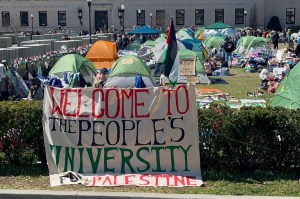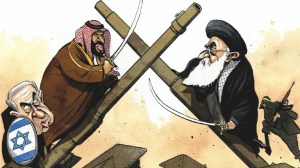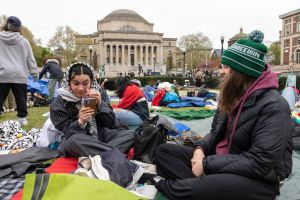The Islamic Republic of Iran is reeling. Its 43-year-old patriarchal system of bearded clerics is witnessing its biggest nationwide demonstrations in years. Iranians of all classes, regions, and professions are pouring into the streets. All this in the heart of the world’s only theocracy, where voicing any discontent can land you a bloody face and a hefty prison sentence.
The protests, which will enter their second full week on Friday, were sparked by a particularly gruesome crime by the Iranian authorities against a young woman named Mahsa Amini, who was detained by the morality police in Tehran for supposedly dressing immodestly. She was enrolled in a hospital shortly thereafter with a tube down her throat and her face bloated from what can only be assumed was a beating during her short time in custody. She would die three days later.
Amini’s family blames the Iranian police for beating her to death (the police’s implausible explanation was that the healthy 22-year-old died from heart failure). The news caused such anger among Iranians that some demonstrators were even chanting for the death of Supreme Leader Ali Khamenei.
The protests have turned more intense as the days have gone by. Demonstrators have hit the streets in as many as 80 Iranian cities and towns. Women are defiantly throwing their veils to the ground, setting them alight, and cutting off their hair in opposition to the Iranian government’s strict morality codes. The demonstrations have mushroomed into a wholesale expression of grievances against the system itself, in which corruption and nepotism are rife, the security services are seemingly above the law, political competition is only as vigorous as the octogenarian ayatollahs allow it to be, and inflation is as high as 60 percent.
The United States has responded as you might expect, with strong words of condemnation and more economic restrictions. Secretary of State Antony Blinken released a statement blasting Tehran for its persecution of women and calling on the Iranian government to allow peaceful protest. The Treasury Department imposed sanctions on the morality police and seven senior leaders in Iran’s security apparatus. Washington is exempting other sanctions to allow service providers to assist the Iranian people in circumventing a ban on internet access and social media applications. As national security adviser Jake Sullivan said on Meet the Press last weekend, “we will keep speaking out day in and day out because this is a matter of fundamental justice, dignity, and rights, and the United States knows which side we are on.”
The Iranian government, of course, is intent on maintaining power at all costs. This isn’t the Islamic Republic’s first rodeo: the Islamic Revolutionary Guard Corps, the Basij paramilitary militia, the riot police and the intelligence services have had their fair share of experiences with demonstrations in the past. Unlike the stereotypical authoritarian state where the masses are docile, content, petrified or otherwise uninterested in politics, the Iranian people can be quite active when their lives are disrupted. They aren’t afraid to express their anger when daily life becomes intolerable.
The problem is that the Islamic Republic is equally unafraid to crack down on those protests with full force, whether it’s with mass arrests or bullets into the crowd. Before the current demonstrations, the Iranian authorities were challenged by their people on four occasions over the last thirteen years. In 2009, the Green Movement rallied against fraudulent elections that allowed the firebrand Mahmoud Ahmadinejad to claim a second term. In 2017, the protests were about the general state of affairs in the country, more specifically the lack of economic opportunity. In 2019, government-imposed fuel price increases were the culprit. All three of these uprisings were ruthlessly and unapologetically suppressed by the Iranian security forces, with as many as 1,500 Iranians killed in 2019 alone.
Whenever the Iranian political system is challenged, that system turns inward and reacts with brute force. Reform is never contemplated, let alone enacted, for fear of emboldening Iran’s critics (both internally and externally) and causing dissension in the ranks. The inevitable response is violence and repression.
As disturbing and counterintuitive as it is to say, the approach has been effective thus far. The Islamic Republic remains standing more than forty years after its establishment. Ayatollah Ali Khamenei has been the supreme leader for more than thirty years. Iran’s various institutions, from the Guardian Council to the Assembly of Experts, are working as their forefathers intended: by preserving and strengthening the current order.
For those in the West, the sight of tens of thousands of Iranians risking their lives and freedom to hold their rulers accountable is awe-inspiring. But every time protests in Iran occur, some assume those rulers are on their last legs. And in every case, our expectations fall flat. Caution and humility are in order.


















